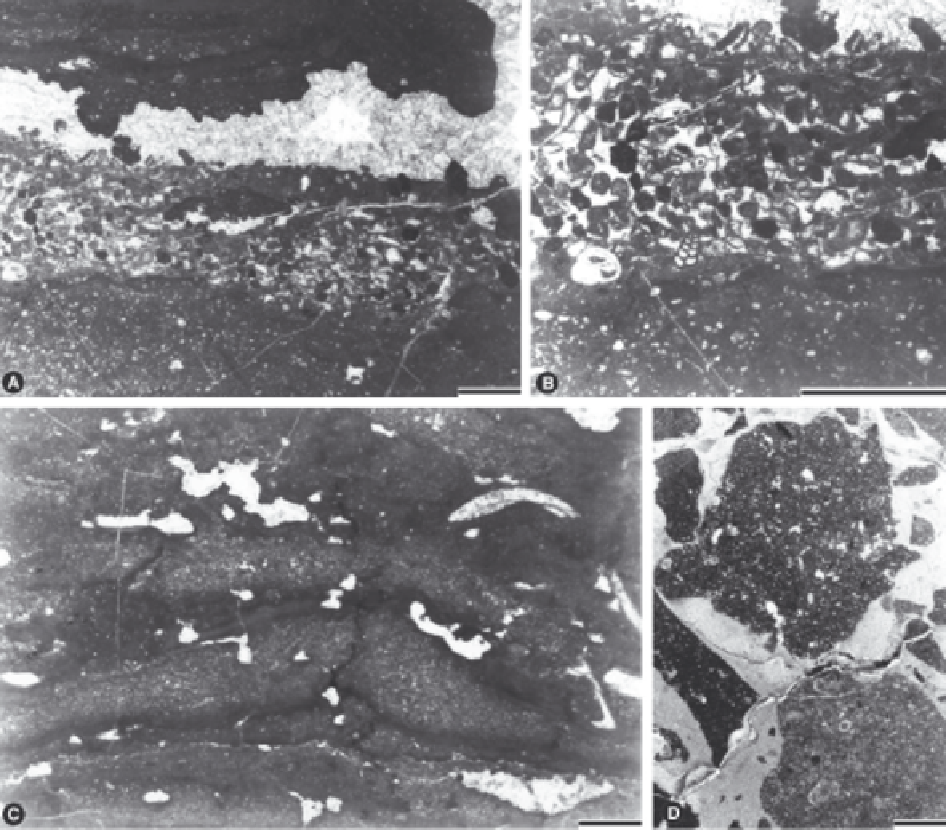Geology Reference
In-Depth Information
Fig. 16.2
.
Dachstein (Lofer) cycle.
A:
Laminated mudstone of the intertidal Member B. The lower part of the picture shows
a peloidal packstone layer (pellet loferite). Sand-sized particles forming a grainstone texture were deposited within pockets
of the loferite layer. The grainstone is separated from an upper mudstone layer by spar-filled sheet cracks, peripherally filled
with recrystallized radiaxial-fibrous cement.
B:
Detail of -> A showing the composition of the grainstone layer. Grains
comprise peloids, micrite clasts, coated grains and fossils. The latter are represented by different types of benthic foramin-
ifera, gastropods, and echinid spines. The grain association and the erosive lower boundary of the grainstone layer point to
the deposition of subtidal sediment on tidal flats under the influence of sporadic high-energy events.
C:
Some of the micritic
and pelmicritic layers forming the laminated mudstone of Member B are fragmented, possibly indicating desiccation of mud
layers. The voids are infilled with crystal silt interpreted to be of vadose origin.
D:
Detail of a conglomerate floatstone shown
in Pl. 140/2, developed at the top of the subtidal Member C and included within the supratidal Member A. The clasts are
packstones with small shell debris similar to Pl. 140/4 possibly indicating reworking of subtidal carbonates of Member C.
The matrix is microsparite.
A, B, C: Late Triassic (Dachstein limestone, Norian): Pass Lueg, Salzburg, Austria. D: Late Triassic (Dachstein lime-
stone, Norian): Steinernes Meer, Salzburg, Austria. Scale is 2 mm.
by porostromate and/or spongiostromate cyanobacte-
ria and algae; wackestone and packstone with oncoids
and small ooids; poorly sorted ooid wackestone and
grainstone; ooid grainstone; intraclast wackestone and
packstone; intraclast grainstone; bioclastic grainstone
with diverse fauna (e.g. bivalve shells, brachiopods,
echinoderms).
The Latemar cycle
The Latemar cycles studied in the Southern Alps
differ from the peritidal Dachstein cycles because they
formed in subtidal shelf settings beyond the reach of
tidal flats or shoreline sand. The cycles comprise depo-
sitional cycles with no depositional or erosional breaks,

